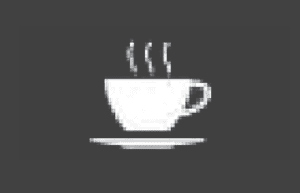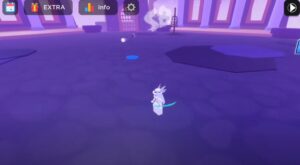Everybody loves a good cup of coffee, but no one expects to see one show up on their Toyota’s multi-information display. Yet, that’s exactly what happens in some circumstances. So, what does the Toyota coffee cup symbol mean?
To remove all confusion, I explain the meaning of the coffee cup in Toyota vehicles. I also explain how to turn this warning symbol on and off.

WHAT IS THE COFFEE CUP SYMBOL?
All newer Toyota models can have a coffee cup symbol appear on the multi-information display.

With that said, this symbol is part of the driver drowsiness alert program built into Toyota Safety Sense™.
There are two different reasons why the coffee cup symbol will turn on.
- After about three hours of non-stop driving, the alert attempts to get your attention. A corresponding message says, “Would you like to take a break?”
- If the vehicle is swaying around in the lane frequently, indicating that you may be tired. However, this sway warning icon may be different than a coffee cup symbol depending on your model.
The goal of driver drowsiness alerts is to ensure you take a break before it becomes too dangerous to drive. While there’s nothing forcing you to follow these recommendations, they are in your best interest.
HOW TO TURN IT ON/OFF
You don’t have to endure the coffee cup symbol if it bothers you. Toyota built in a way to shut it off in some circumstances. Read the owner’s manual for more instructions or try this:
- Enter the LTA (Lane Tracing Assist) settings on your multi-information display
- Turn off the Sway Warning
The alert should no longer come on when the car is swaying in its lane (if applicable to your Toyota model). However, there’s no way to turn it off as a warning for long-distance, non-stop driving. It still shows up after driving about three hours non-stop.
The only way to avoid it is to stop driving before the alert comes on by taking breaks more frequently. However, you can still close out of the message when it eventually pops up.
IS IT IMPORTANT?
You aren’t forced to obey the coffee cup symbol. It’s merely a suggestion built into the safety system.
With that said, I think it’s wise to take a break when it shows up. Even if you think you’re alert and you don’t feel tired, it’s better to be safe than sorry.
As someone who has driven across the country multiple times, I have encountered this warning several times. It’s a good reminder when I’m on the road.
According to the NHTSA, 633 deaths occurred because of drowsy drivers in 2020. That’s just what can be proved. I imagine the real statistic is much higher.
The key to avoiding these accidents is prevention. Here are a few tips to consider.
- Get a good amount of sleep each night, preferably seven to eight hours
- Don’t drink alcohol before driving
- Avoid driving while taking medications that increase drowsiness
- Don’t drive during hours of peak sleepiness (from midnight to 6 am and the late afternoon)
If you get sleepy while driving, there are several short-term solutions that might help. Consider these tips:
- Drink an energy drink or coffee
- Stop for a short nap in a safe location
- Ask a passenger to drive for a short time
Some of these steps may seem like a hassle, but it’s far better than causing an accident.
(NHTSA)
FREQUENTLY ASKED QUESTIONS
Why is my Toyota telling me to take a break?
What does the coffee cup on my dashboard mean?
How does my car know I’m tired?
STAY ALERT AND SAFE
You may think you’re safe to drive longer than three hours, but your judgment can often lead you astray. To be safe, it’s best to follow all of the recommendations given by the alert system.
It can be a pain to take a twenty-minute break, especially if you have somewhere to be. However, it could be enough to prevent a major accident from occurring, which is worth every minute.





